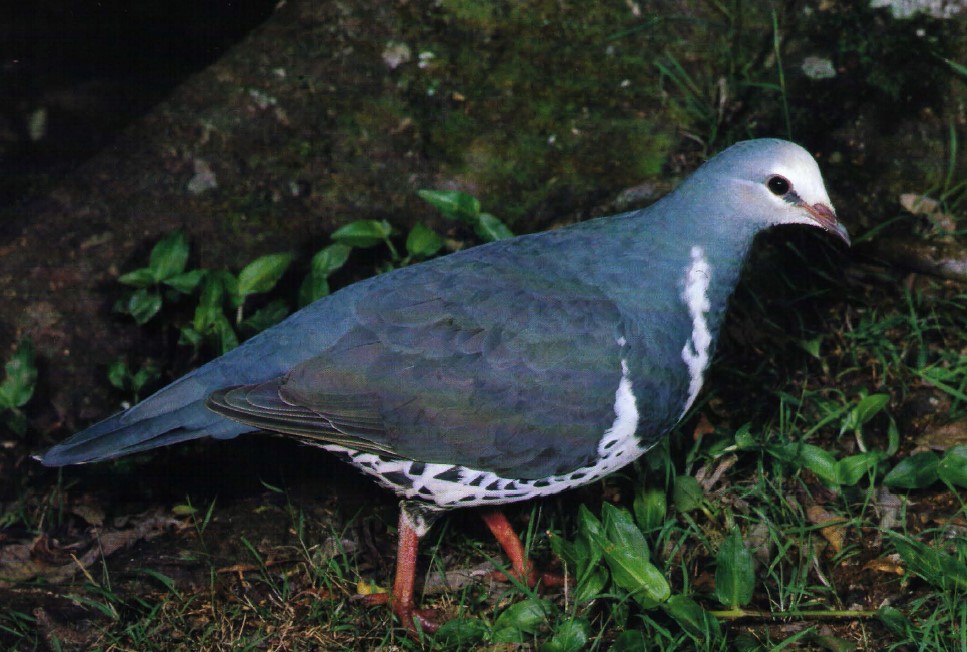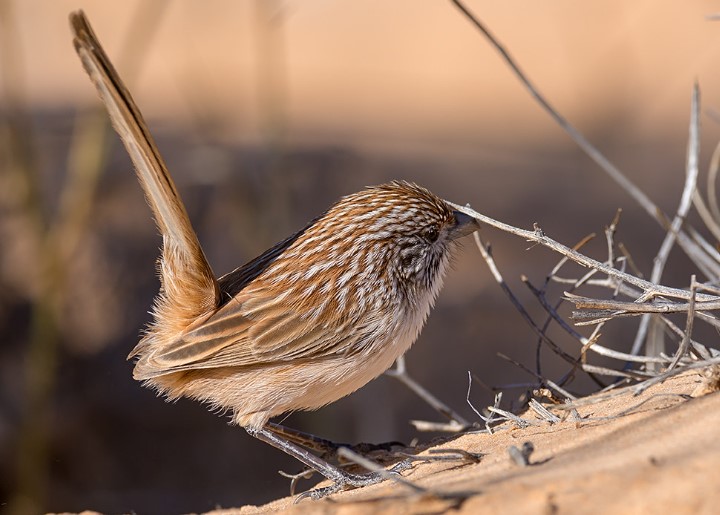Flying Wonga Pigeons are rarely seen unless they have been disturbed. It spends the majority of its time on the ground and mostly walks, except at night when it sleeps in trees. Despite being quiet and nimble, it feeds over the forest floor. Birds of this species are extremely alert and almost impossible to stalk.
They are also heard rather than seen more often than they are seen. An advertising coo that is monotonously repeated from the ground or from a low branch. If surprised, a Wonga Pigeon will scream and clap its wings loudly before it sails away through the timbers or alights on a branch to sit motionlessly. Back to the intruder and watching over one shoulder.
Most Wonga Pigeons are found in tall eucalypt forests with understory shrubbery of wattles and rainforest thickets, but they are most abundant in tall eucalypt forests with rainforest overstory shrubbery. The fruit and seeds that fall from such undergrowth provide essential food for pigeons when they fall to the ground.
It is sometimes possible for them to congregate during sudden food drops. In spite of this, the birds are rather sedentary and occupy the same territory year after year. In contrast to any other Australian ground pigeon, the male Wonga Pigeon displays a display quite different from any other. Raising its wings and tail rhythmically, it stands on a log or the ground. Swinging its tail up to the horizontal as it raises its partially opened wings, it spreads it fully.

During the fall, the wings drop and the tail closes. Swinging its head from side to side and tucking it briefly behind each wing, the bird tucks its head behind its tail as it rises and falls. The white of its lower breast and belly becomes clearly visible during this deliberate, rhythmic swinging. This gray breast alternates with the broad white ‘V’ on the front. The female usually mates after a few bouts of this display, after which they stand close together, billing and grooming each other. Males are not paraded.
In addition, the males also display a less conspicuous bowing display in response to perceived threats. Spreading its tail slightly while keeping its wings closed, it raises its tail and vent from 45 degrees to the horizontal. Each time it swings, it trills musically.
However, the Wonga Pigeon has declined overall because of clearing and shooting, although it is still abundant in many areas. In contrast to other Australian pigeons, its flesh cooks white, making it a prized game bird. The pigeon is also known as Wonga Wonga. Approximately 390-410 mm is the length of the Wonga Pigeon.
There is no difference between the sexes of adults. Pigeons have white foreheads and dark grey lores. Slate-grey is the color of the upper parts of the uniform. A white area under the bill is visible, while a pale grey area is visible at the throat. There is a broad white V-shaped mark on the slate-grey breast. There are black spots on the lower breast and belly of this bird. Undertail fawn of the Wonga Pigeon with gray feather tips. There is a brown tint to the eyes and a brown tip to the bill. The feet are pink-red.
Compared to its mature counterpart, the immature bird has a browner back, a greyer front, and a less conspicuous white ‘V’ on its breast. A Wonga Pigeon’s advertisement call is a loud, high-pitched, resonant coo uttered at half-second intervals in long sequences. When males bow, they emit a trilling, soft sound.
Nesting and breeding take place throughout the year, but mostly between October and January. Nests vary in size, some are large and substantial, and others have sparse platforms of sticks in the shape of a dish. There is usually more thickness on the outside of the nest than in the center, which has a diameter of 300mm and a depth of 90mm. Tree ferns or vines are usually used to build the nest, located 3-20 meters above ground, often on the edge of the scrub.
A Wonga Pigeon usually lays two smooth, lustrous white eggs. Eggs measure 39 x 28 mm and are long-oval in shape. Coastal forests, moister forests of adjacent ranges and tablelands, and coastal forests of eastern Victoria and the Clarke Range, Queensland, are the main habitats for this species. Springsure and Darling Downs, Queensland, are examples of places where the range extends inland to drier scrubs. There are no races.
Read More – Nicobar Pigeon – The Coolest Pigeon in the World






